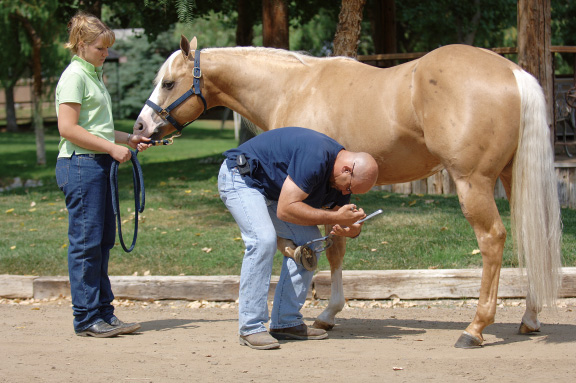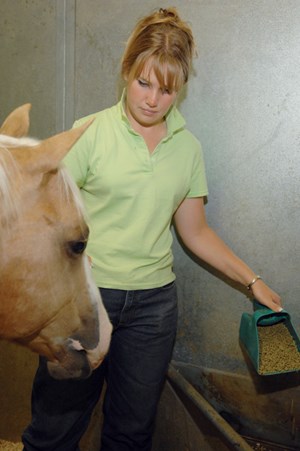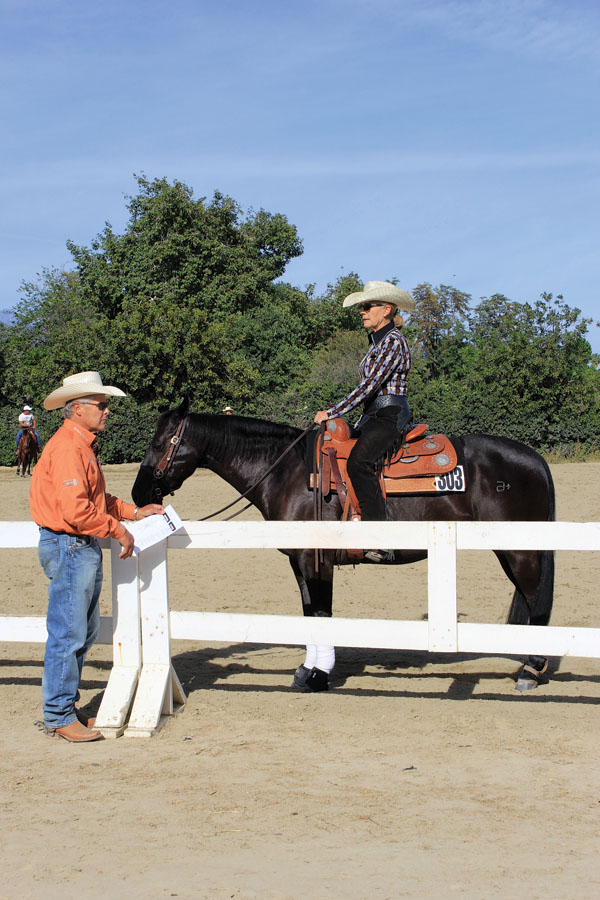Most people I talk to think horsemanship is all about how well you ride and/or train. I never bought into that concept, though I did once think strapping on spurs and getting it done in the saddle was about 50 percent of the horsemanship equation. Now, I think it’s 40 percent—if that.
[READ: 4 Ways to Improve Riding Skills]
I know and see a lot of talented people I wouldn’t consider horsemen because all they know about their horses is how fast they turn around, how well they move, or how high they jump. These folks aren’t interested in how sound their horses are physically and mentally.
This is especially true in today’s generation of trainers. A lot of young people care about horses only as a means to an end. It’s greed, pure and simple. They don’t realize how hard it is to find a good horse, and how critical it is to take care of him when you do. The good ones are hard to replace.

Care extends well beyond saddle time. Good horsemanship starts on the ground, in the barn or paddock, with everyday management. In this article, I’ll share five easy ways you can be a better horseman today. (Hint: Only one of them involves riding.)
1: SCHEDULE A LAMENESS EXAM
[READ: Troubleshooting Lameness]
Why: To get a baseline of your horse’s physical soundness. A horse that’s working sore will soon develop resistance—and resentment.
How it’ll help: A good performance horse veterinarian can evaluate your horse and determine whether he has a subtle problem that needs to be addressed, or perhaps additional management to help prevent one from happening.
For instance, based on age, level of performance, and the exam results, your vet may recommend joint injections, or the addition of a joint supplement to your horse’s diet. Or, the vet may say your horse is fine at this time. Regardless, you and he/she now have a baseline from which to work for the future. And, your vet is now part of your performance team, which is key for any horseman.
Note: If you don’t have an open, trusting relationship with your current vet, make a change. I insist on working with veterinarians who will talk to me, in layman’s terms, and not down to me. I also want to work with vets I trust not to suggest unnecessary procedures. If you don’t have such a vet, find one through your trainer, friends, or word of mouth.
Another note: Don’t just depend on your vet. Look at your horse’s legs every day when you lead him out of his stall or paddock. Check for heat and swelling, lumps or bumps every time you groom him and apply boots. And take action immediately if you find a problem.
2: TAKE OVER YOUR HORSE’S FEEDING
[READ: Do’s & Don’ts for Horse Feeding]

Why: You can make sure he’s getting exactly what he needs to keep him healthy and looking good.
How it’ll help: By working with a nutritionist or performance horse veterinarian, you can develop a balanced ration based on your area’s hay and grass, your horse’s age, level of performance, and needs. Then you can tweak the ration based on how your horse looks and acts.
My feed program is simple. I feed good quality hay and a high-fat, low-energy grain. That keeps my horses in good weight, but doesn’t juice them up to the point that I have to ride them all day to keep them quiet. Every horse on our place is fed according to his specific needs. How do I determine that? I look at them every day, and make adjustments as needed. Too fat (or fresh)? Cut back. Losing weight? Bump up. Leaving feed when he’s normally a chowhound? He might have a problem. I know what the horses should look and act like, and feed or act accordingly. Your vet or a nutritionist can help you do the same.
3: SPEND MORE TIME WITH YOUR HORSE
Why: The better you know him (and he knows you), the faster you can pick up and address any problems with him physically or mentally.
How it’ll help: His health and performance will improve, as will your relationship. The toughest non-pros and trainers to beat are the ones who know their horses like the backs of their hands. They can read their horses’ moods, such as when they need some turnout time. When they’re tired or sore. When they’re feeling a bit puny or a hair too fresh.
The only way you can get to this point is by spending time with your horse on the ground and under saddle. You can’t just show up, hop on, ride, then leave. Spend time grooming your horse. Hang out with him when he’s turned out, or hand-graze him. Get out there to feed him twice a day, then spend additional time observing him to learn his moods and expressions. That knowledge will pay off not only in your performance, but also in your relationship.
4: TALK TO YOUR FARRIER
[READ: 6 Steps for Healthier Hooves]

Why: You’ve heard the adage, “No hoof, no horse?” It’s true, and no one is as critical to your horse’s hoof health as your farrier.
How it’ll help: Being there while your horse is being shod, or arranging for a consultation, will give you an opportunity to ask your farrier questions and get his opinion on whether your horse’s feet are on the right track.
A good farrier can identify hoof issues before they turn into big problems, and suggest shoeing or management changes to address them. Our farrier works with our veterinarians as part of our team. If you don’t have a good relationship with your current farrier, make a change. Ask your vet to recommend a good one, someone he or she is comfortable working with—and who shows up as promised.
5: SPEND MORE TIME WITH GOOD HORSEMEN

Why: There’s no faster way to improve your knowledge as a horseman than by hanging out and riding with better horsemen than you are.
How it’ll help: You’ll get a fresh eye on your riding and your horse. This is key. Sometimes, when you ride the same horse the same way, day after day, even “wrong” starts to feel normal. A good horseman can pick up subtle problems and help you resolve them.
You’ll also have an opportunity to pick that person’s brain about anything, from ways to improve your performance, to ways to upgrade your management program. So either invite people to your place to ride with you, or haul out to ride and/or visit with them. That’s the beauty of horses. You never stop learning, and you can always find ways to be a better horseman.

